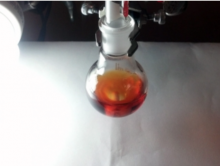

Poultry used to be the usual suspect in cases of Salmonella poisoning. Today, however, most outbreaks of the illness come from fruit and vegetables that have become infected when the soil in which they grow is polluted by animal waste or non-potable water. There currently is no method of reducing the growth of Salmonella on such produce.

A Canadian research team at the IRCM in Montréal, led by molecular virologist Éric A. Cohen, PhD, made a significant discovery on how HIV escapes the body’s antiviral responses. The team uncovered how an HIV viral protein known as Vpu tricks the immune system by using its own regulatory process to evade the host’s first line of defence. This breakthrough was published yesterday in the scientific journal PLoS Pathogens and will be presented at the upcoming IAS 2015 conference in Vancouver. The findings pave the way for future HIV prevention or cure strategies.

Today in the journal Nature prominent researchers from Canada, Europe and the U.S. have made a powerful call to major funding agencies, asking them to commit to establishing a global genomic data commons in the cloud that could be easily accessed by authorized researchers worldwide.


As scientists continue to hunt for a material that will make it possible to pack more transistors on a chip, new research from McGill University and Université de Montréal adds to evidence that black phosphorus could emerge as a strong candidate.

Insulin has long been known as the hormone which controls the body’s sugar levels: humans who lack or are insensitive to insulin develop diabetes. Although insulin is also made and released in the brain, its effects there have remained unclear.

New research released today in Nature Neuroscience reveals for the first time that pain is processed in male and female mice using different cells. These findings have far-reaching implications for our basic understanding of pain, how we develop the next generation of medications for chronic pain—which is by far the most prevalent human health condition—and the way we execute basic biomedical research using mice.

“Don’t diss dad” might mean more than making sure not to forget dad on Father’s Day, as researchers look at just how influential environmental exposures and genetic interactions are on dad’s sperm and, as a result, his offspring.

We know that an extra bedroom, and a metro station nearby will make your house more valuable. Now it turns out that a bike-sharing station nearby will do the same.


A commonly used plasticizer known as DINCH, which is found in products that come into close contact with humans, such as medical devices, children's toys and food packaging, was put under the microscope by Montreal researchers.



